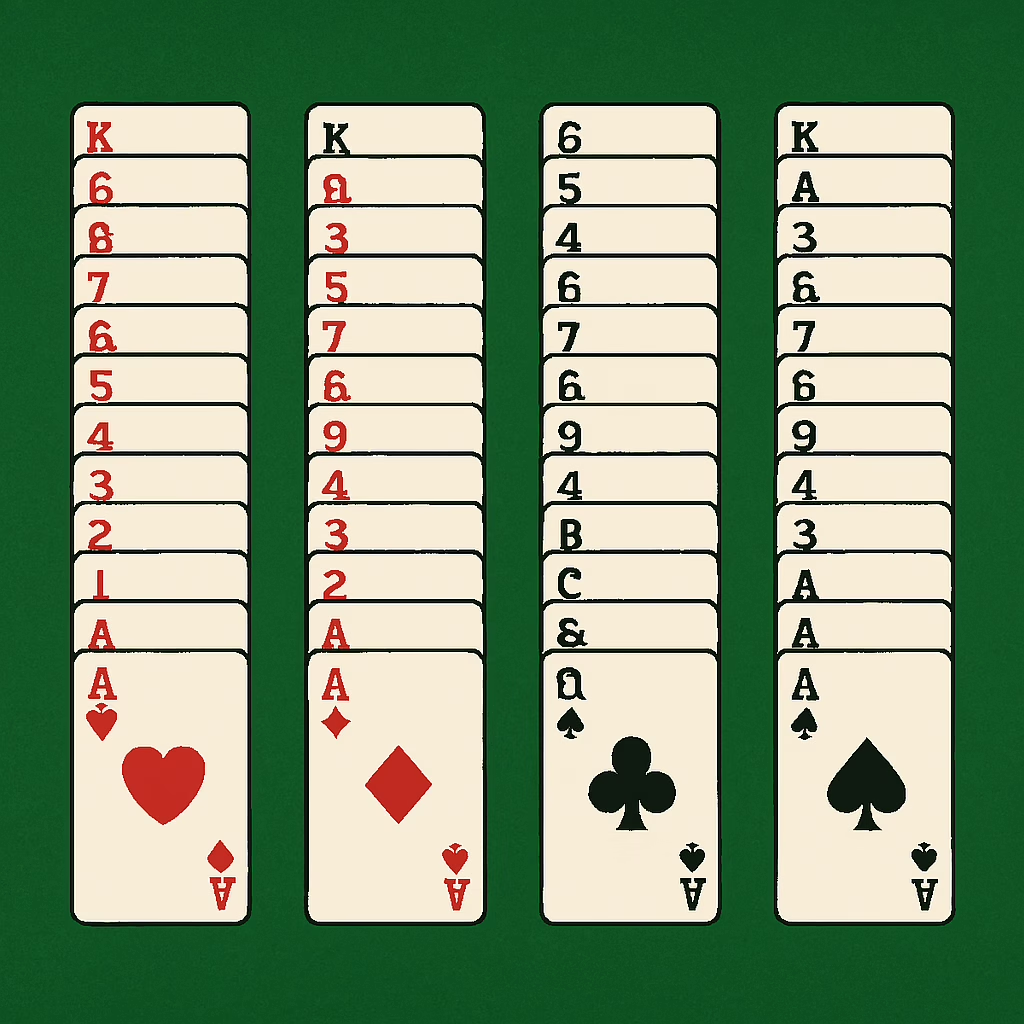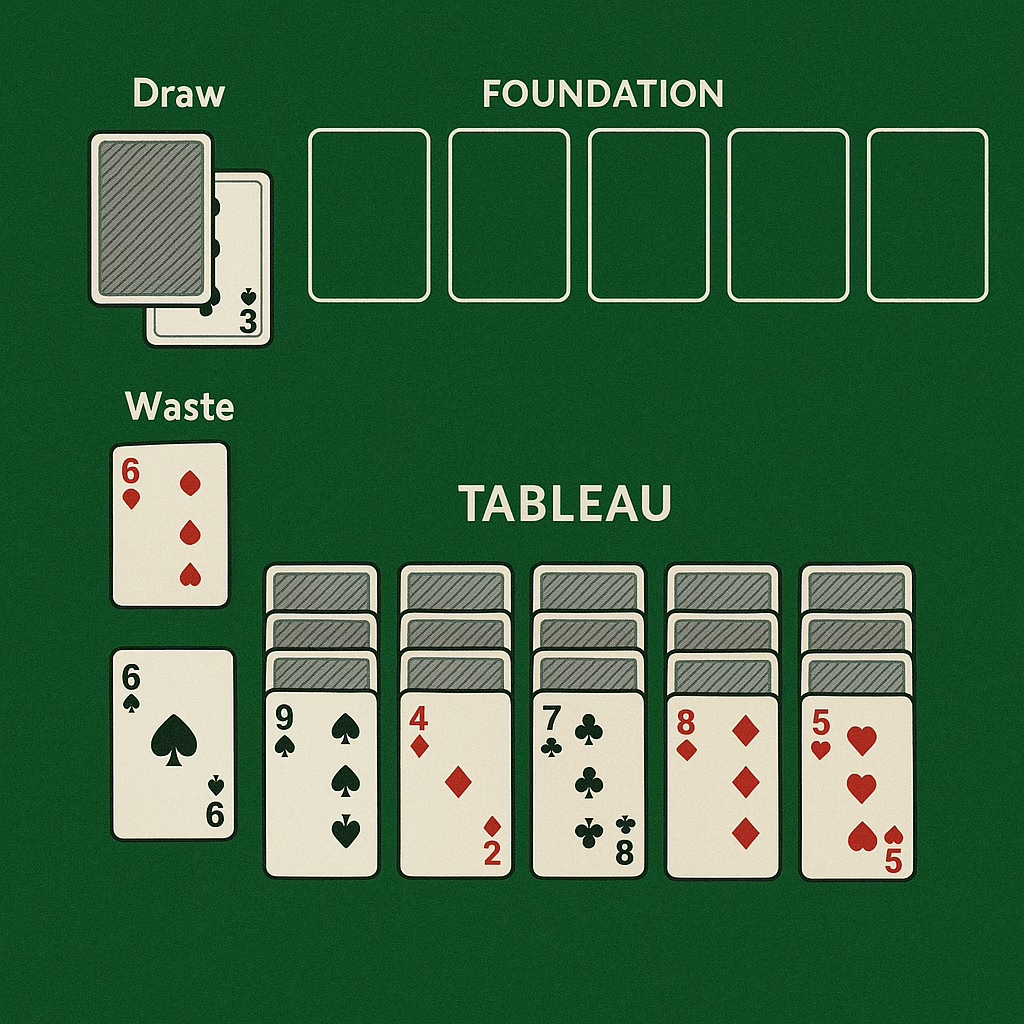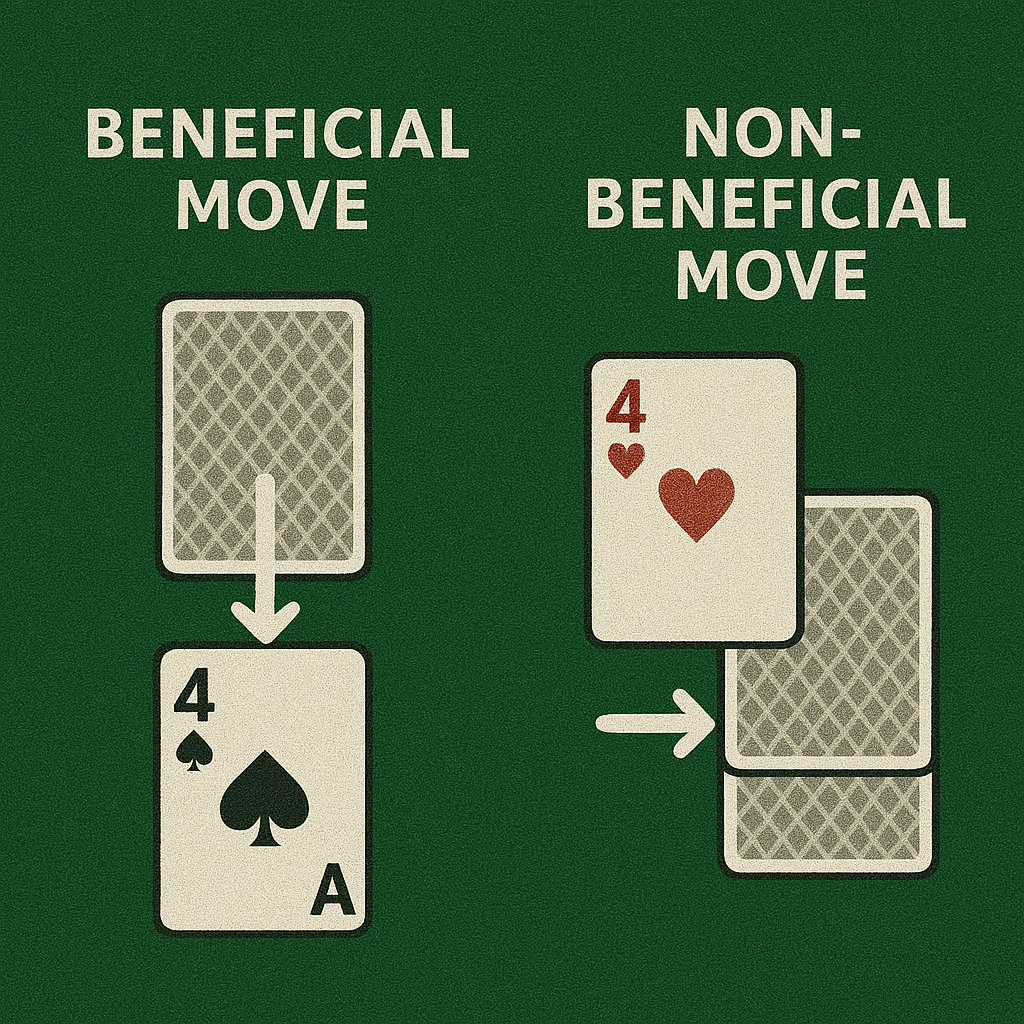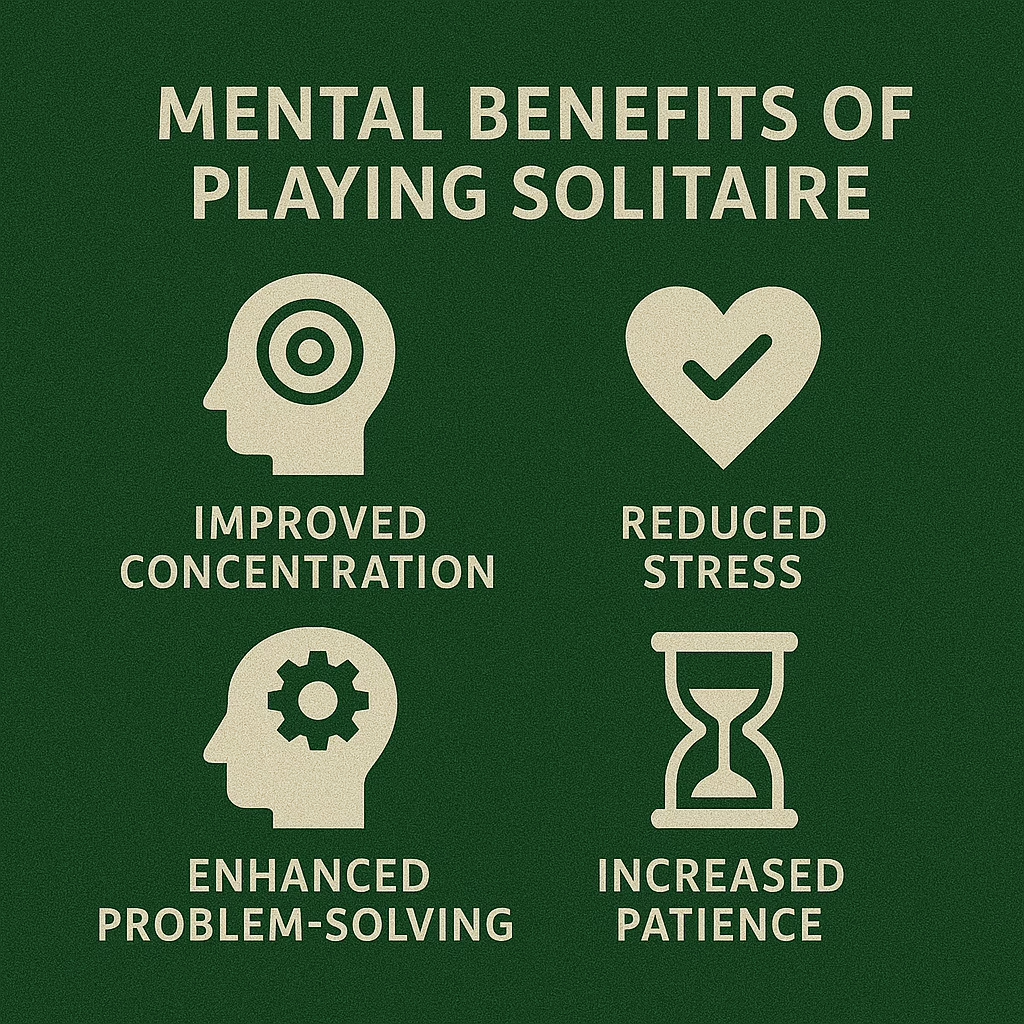Classic Solitaire, also known as Klondike Solitaire, is a timeless card game enjoyed worldwide. Whether you’re new to the game or looking to refine your skills, this guide will walk you through everything from setup and rules to strategies and benefits.
Objective of the Game
The primary goal in Solitaire is to build four foundation piles sorted by suit from Ace (lowest) to King (highest). Successfully moving all cards to the foundation piles completes the game.

How to Set Up Solitaire
- Shuffle the Deck: Begin with a standard 52-card deck.
- Deal Cards:
- Create seven tableau piles.
- The first pile has one card, the second has two, and so forth, up to seven cards in the seventh pile.
- Only the top card in each pile is face-up.
- Remaining cards form the draw pile.

Rules of the Game
- Moving Cards:
- Cards can be moved between tableau piles in descending order and alternating colors (e.g., a red 9 on a black 10).
- You may move entire sequences of face-up cards.
- Foundation Piles:
- Start each pile with an Ace and build up to King, matching suits.
- Drawing Cards:
- From the draw pile, flip cards one by one or in sets of three (depending on preference).
- Only the top card can be played.

Strategies to Win
- Prioritize Uncovering Cards:
- Always aim to flip face-down tableau cards quickly to increase options.
- Balance Tableau and Foundation Moves:
- Don’t rush to move cards to the foundation piles prematurely; consider tableau needs.
- Focus on Larger Stacks First:
- Reduce larger tableau piles early to improve card mobility.

How Difficult Is Solitaire?
Classic Solitaire’s difficulty ranges from easy to moderately challenging, depending on card arrangement. Statistically, about 80% of deals are solvable, but careful strategy is often required.

Benefits of Playing Solitaire
- Enhances Mental Activity: Improves concentration, strategy-building, and cognitive skills.
- Stress Reduction: Acts as a meditative activity, reducing stress and anxiety.
- Increases Patience and Problem-Solving: Teaches patience and persistence through structured problem-solving.




